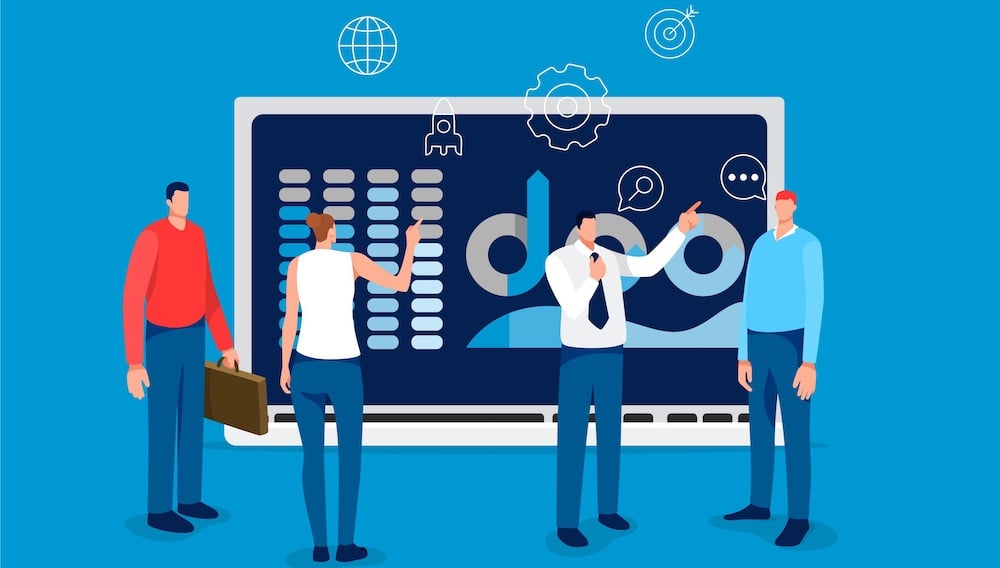ERP System Can not Handle Recurring Revenue Business Models
For businesses that are looking to transform or improve their service pricing and billing, an ERP system may not be enough to handle the complexity...
5 min read
 Taija Engman
:
Feb 6, 2025 8:54:15 AM
Taija Engman
:
Feb 6, 2025 8:54:15 AM
If you run enterprise SaaS or Managed Services business, this shouldn’t be news to you: the subscription economy and as-a-service model continue to transform how businesses operate and serve their customers.
As companies rush to capture market opportunities, many find themselves held back by outdated systems that weren't built for today's demands. If you're struggling with your current configure-price-quote, contract lifecycle management and billing systems, you're not alone (and that’s why we’re writing this article).
The true cost of poor subscription and recurring revenue management often lurks below the surface. Beyond the obvious financial impact of billing errors and revenue leakage, there's a deeper operational cost that affects your entire business.
Most companies recognize the direct costs of missed billing cycles and incorrect pricing during onboarding or upsell situations, but they often overlook the cascading effects of mishandled upgrades, unbilled increased usage, forgotten price increases, and the upsell opportunities left untapped at contract renewals.
Manually fixing the gaps between multiple systems or the hiccups in data flow within the end-to-end process – from configure-price-quote to contract lifecycle management to billing – also causes errors and issues. These seemingly small issues compound over time, creating a domino effect throughout your organization.
Your finance team spends hours reconciling errors, while your customer service representatives struggle to explain confusing bills. Meanwhile, your sales team hesitates to propose creative solutions because they know the system can't handle anything outside the standard offerings.
The result isn't just lost revenue, but also lost opportunities and burned-out staff who spend their days fixing preventable problems instead of driving growth.
While companies are aware that speed is king, many businesses still take weeks to move from quote to cash collection. These challenges often stem from functional limitations in their systems, such as:
These functional shortcomings create ripple effects across the organization:
Modern businesses need integrated, automated solutions that eliminate these bottlenecks, enabling them to create and update offers with ease, close deals quickly, recognize revenue accurately, and build lasting customer relationships. Without such capabilities, you're not just losing time – you're potentially losing customers.
Most enterprise subscription and managed services businesses use multiple software tools to manage their operations – this is the status quo, and it’s not necessarily a bad thing. However, this fragmentation can create a perfect storm of inconsistency and confusion.
Your sales team quotes one price, your billing system has a different pricing structure, and your customer success team manages different information entirely. These discrepancies lead to more than just billing errors - they undermine your ability to make informed decisions and provide good service.
It’s just one reason why your subscription and recurring revenue management system should provide a seamless flow from quote to cash and integrate with all of the software tools your business runs on (more on that later).
When customer data lives in silos, even simple questions become complicated investigations. Finding accurate data of what service entitlements were active 6 months ago, or identifying reliable revenue forecasts turns into a multi-day project. Financial reporting requires manual reconciliation across systems. Compliance risks increase as data consistency becomes harder to maintain.
Business-to-business environments demand flexibility, which means modern businesses also need to adapt quickly to market demands and customer preferences. Your subscription and recurring revenue management system should, in turn, support modern pricing approaches:
When your system makes these changes feel like major IT projects, it could be a sign – and not a good one. The ability to quickly adapt your offerings and pricing models can mean the difference between leading your market and falling behind.
Growth should be exciting, and sometimes uncomfortable, but not painful. Unfortunately, many subscription and recurring revenue management systems that work fine at a smaller scale become major bottlenecks as businesses grow.
The signs often start subtly: processing times get longer, billing cycles stretch out, and occasional errors become more frequent.
Soon, your team notices more serious issues –API timeouts during critical operations, and increasing data inconsistencies, or even system crashes during peak times.
These technical limitations quickly become business limitations. You can't launch new products because your pricing engine is too rigid. You struggle to correctly bill customer-specific discounts or price increases as agreed. You can't enter new markets smoothly because your system can't handle multiple billing companies, currencies, and languages in one system. What started as an inconvenience soon becomes a barrier to scaling your growth.
Think about your last billing cycle. How much time did your team spend double-checking for errors? How many customer complaints did you handle about incorrect charges?
The most damaging revenue leaks often go unnoticed for months. Usage overages slip through unbilled, renewal dates pass without notice, and promotional pricing continues long after the promotional period ends.
It’s unlikely that a customer will say, “Hey, you undercharged me. Can I pay you now?” And considering MGI Research has uncovered that 42% of businesses estimate they suffer from revenue leakage, this can accumulate into significant losses—even if each oversight is relatively small.
Immediate financial loss aside, when billing errors occur regularly, they erode customer trust and force your team to spend valuable time on fixing issues that don’t need to exist in the first place.
With revenue reporting regulations like ASC 606, IFRS 15, GDPR, and various data privacy laws, compliance isn’t optional. Modern businesses need to navigate complex requirements for revenue recognition, data privacy, financial reporting, and tax compliance. They need to maintain PCI standards, meet local billing requirements, and keep detailed audit trails.
Your subscription and recurring revenue management system should handle these requirements automatically, adapting to new regulations as they emerge. When it doesn't, compliance becomes a constant worry that diverts resources from growth initiatives and increases your risk exposure.
As we mentioned earlier, your subscription and recurring revenue management system needs to work seamlessly with your entire business technology stack. This means smooth integration with your CRM, accounting software, payment processors, and analytics platforms.
When integrations require complex workarounds or manual data transfer, they create inefficiencies and errors that affect every part of your operation.
Customer expectations have never been higher. According to PWC, one in three customers will leave a brand they love after just one bad experience. Today's customers – both consumer and business customers – demand:
When your system can't meet these expectations, customer satisfaction suffers. Support tickets increase, churn rates rise, and growth stalls. Providing a smooth customer experience isn't optional – it's a survival requirement.
In recurring revenue, real-time data is critical in decision-making. Business leaders and finance team members need access to:
Financial insights
Without this data, making informed decisions becomes impossible. Your reporting needs to go beyond basic financial metrics to provide a complete view of your business health. When your system can't provide this insight, you're making decisions based on guesswork.
Want to know if it's time to upgrade your subscription and recurring revenue management system? Take our quick assessment to identify specific areas where a better system could help your business grow and thrive.
Remember: your subscription and recurring revenue management system should help your business grow, not hold it back. If you're spending more time managing your quote-to-cash systems than using them to drive growth, it might be time for a change.

For businesses that are looking to transform or improve their service pricing and billing, an ERP system may not be enough to handle the complexity...
Okay, let’s take a deep breath and dive into the world of the vocabulary of subscription management business. As we know, all businesses and...
What capabilities should you look for in B2B subscription management software? In this blog post, we’ll be taking a look at four essential...